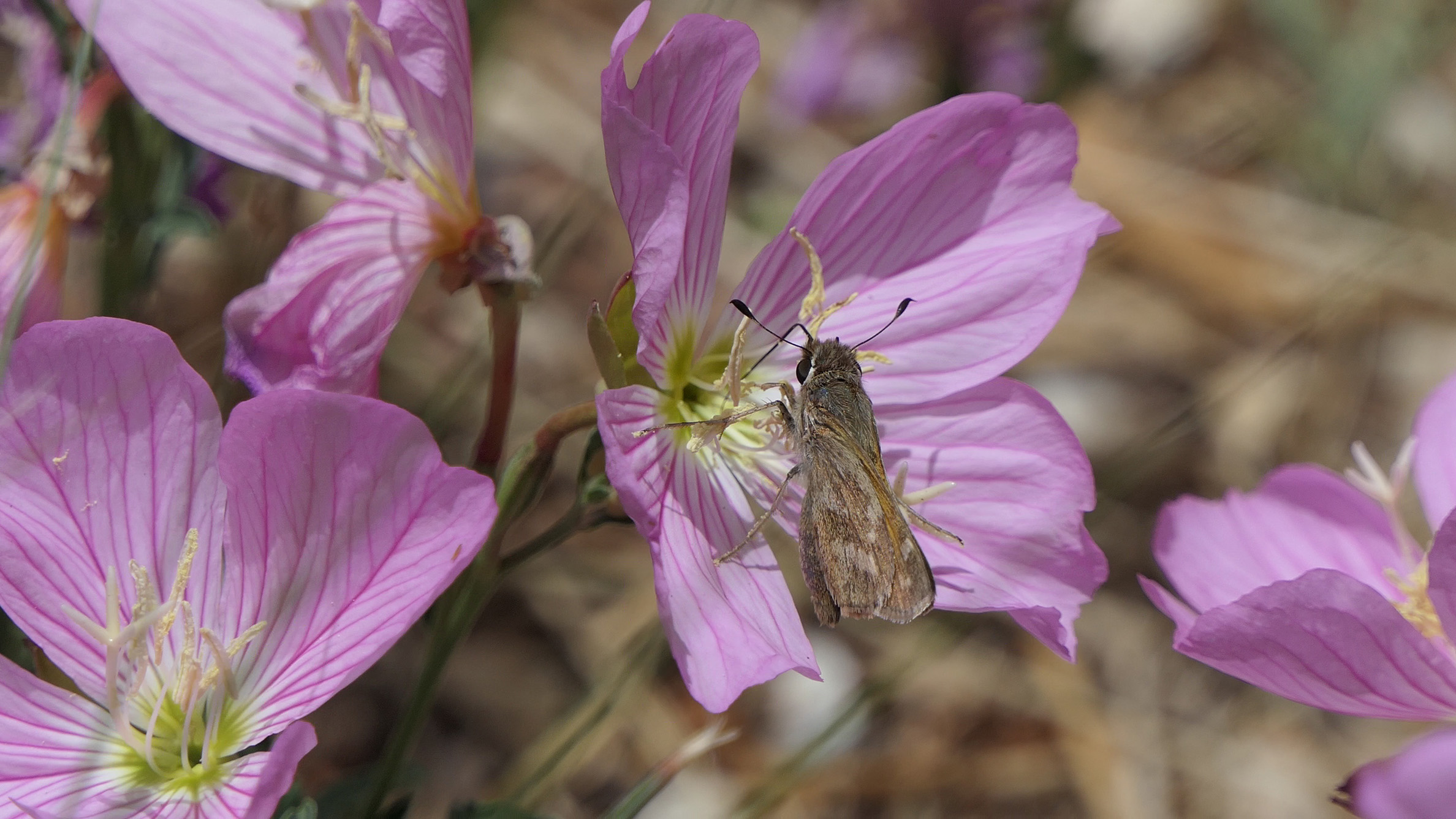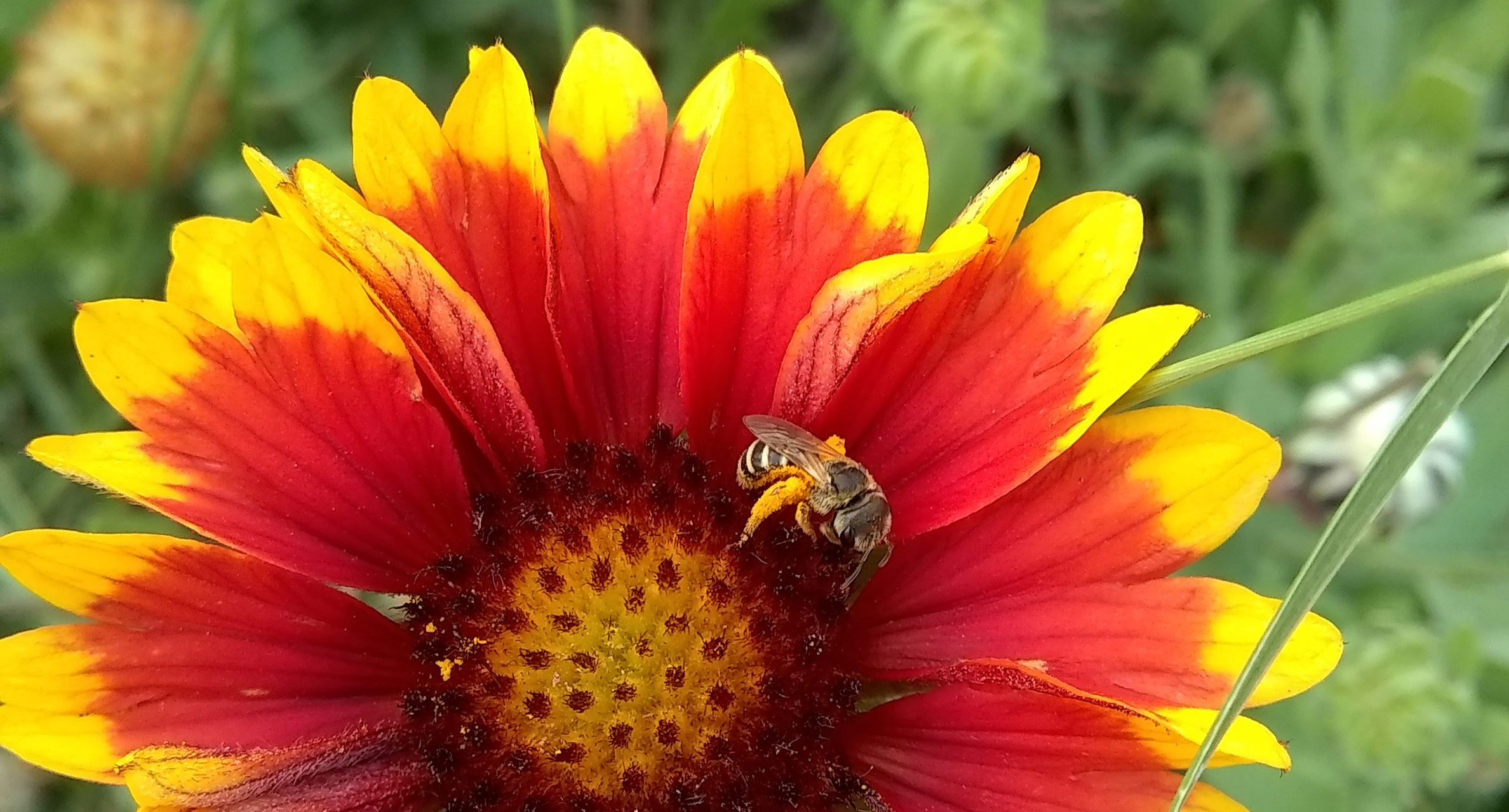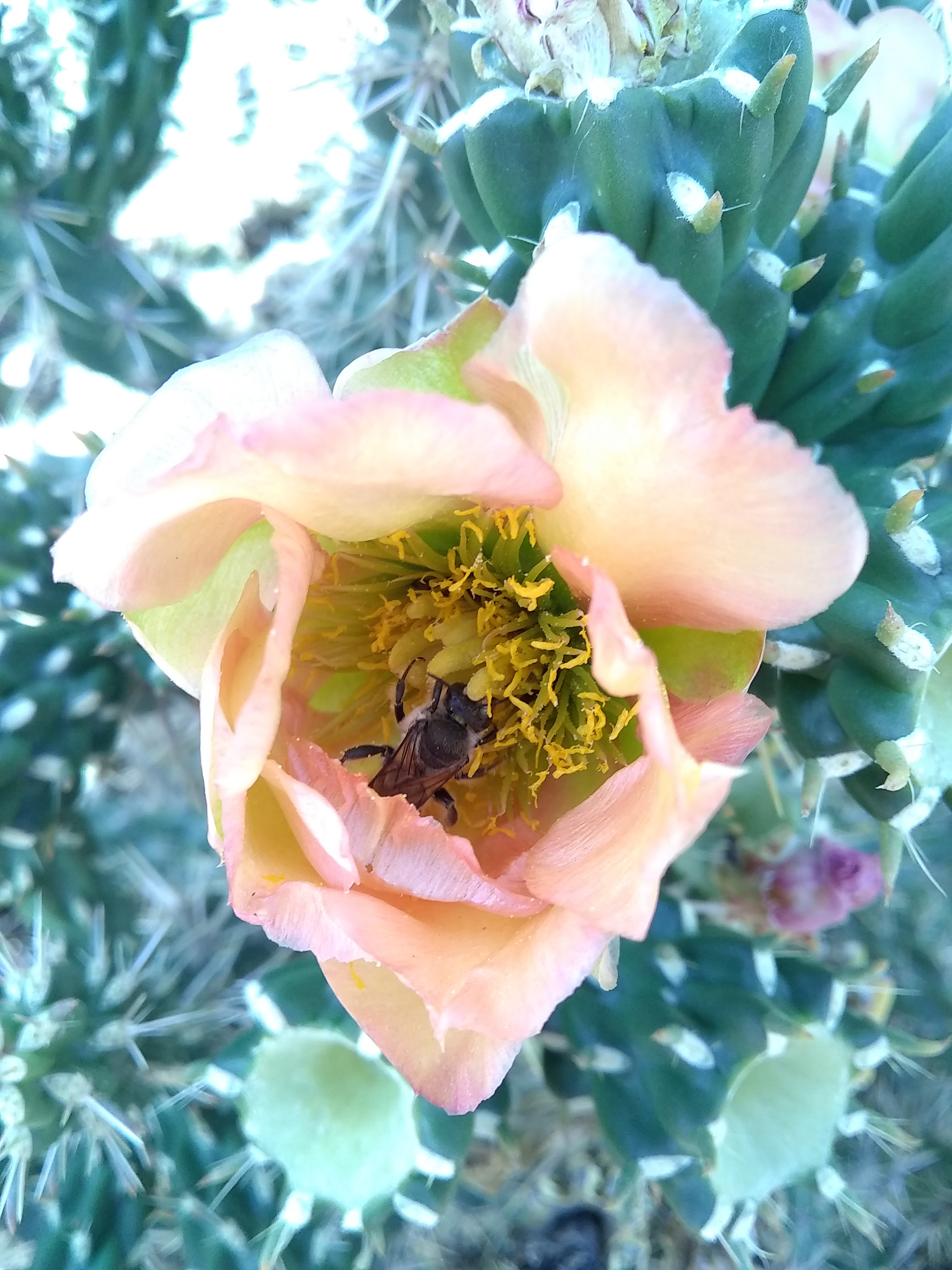One of the leading causes of pollinator declines is habitat loss, the loss of food and shelter for wildlife. In highly fragmented landscapes, habitat corridors or stepping stones connecting large habitat patches are critical to support the movement of wildlife through a generally inhospitable environment. Creating a network of smaller patches of habitat that are accessible to pollinators allows these important animals to find the pollen, nectar, and shelter they need to survive, and in turn brings the flowering plants in these patches the pollinators they need. You’ve probably experienced something similar to habitat connectivity yourself. If you’ve ever used a crosswalk or pedestrian bridge to cross a busy street, that “corridor” allowed you to bypass a barrier and move from one safe patch to another.
Santa Fe, New Mexico, is the home of our pilot Pollinator Trail program, which aims to address habitat loss in urban areas. The project will create connected, climate-resilient pollinator habitat in an urban landscape through the distribution of habitat kits and development of partnerships with local organizations to conduct pollinator conservation outreach.

Showy evening primrose (Oenothera speciosa) is a plant that requires little water and thrives in the desert climate. Its delicate pink blooms add color to Santa Fe yards, and provide a food source for many pollinators, including the sachem skipper (Atalopedes campestris). (Photo: Kaitlin Haase.)
Urban centers are often characterized by densely developed areas dominated by hard surfaces such as concrete roads, asphalt parking lots, and buildings and with little greenspace. This creates a landscape that is severely fragmented and difficult for most wildlife species to move through. While many pollinators can traverse urban areas quite well by flying from one patch of flowers to the next (or to their nesting site), these patches may be few and far between, and not all pollinator species are capable of using or reaching them. In addition, landscaping in urban areas is often dominated by nonnative ornamental plants, monocultures of turf grasses, or complete removal of vegetation in favor of rock mulch or synthetic turf lawns, providing little of value to pollinators—or other wildlife.
Fortunately, we can provide the elements of pollinator habitat in our own yards and in public open spaces by planting a diversity of native flowering plants, providing undisturbed nesting and overwintering areas, and protecting these areas from pesticide use. There are many considerations when designing habitat for pollinators, in particular when choosing plant species to include in backyard or open space pollinator plantings. In the Southwest, where temperatures are rising and droughts are becoming more severe, prioritizing native, climate-smart plants for landscaping ensures that habitat will rely on less water and will be more likely to withstand the changing climate. This pollinator habitat is not only an investment in wildlife. It is an investment in conserving water, creating beautiful, livable cities, and providing outdoor learning and recreation spaces.

A sweat bee (Halictus ligatus) forages on a blanket flower (Gaillardia pulchella), one of the locally native, pollinator-friendly plant species featured in the Habitat Kit Program for Santa Fe. (Photo: Xerces Society / Kaitlin Haase.)
Recognizing the value of pollinator habitats in urban areas for people and pollinators, the Xerces Society is launching the Santa Fe Pollinator Trail to build connected, climate-smart pollinator habitat in an urban community. We’ve used GIS data to map highly developed land cover within Santa Fe and identify core habitat patches and corridors throughout this urban area. This will inform our efforts to strategically place pollinator habitat plantings to improve connectivity, as well as prioritize habitat establishment in historically underserved communities of Santa Fe. This is as a pilot program, and we hope to expand to other cities in future years.
As part of the launch of this Pollinator Trail program, we are expanding our Habitat Kit program to offer kits of climate-smart, pesticide-free native plants to residents and local organizations who commit to providing the time, labor, and space to establish these plants in yards and gardens. The plant kits each contain thirty-two perennials and one tree or shrub, and are intended for use by residents of Santa Fe in their home gardens and as well as for use by partner organizations in public spaces to feature as demonstration or education gardens. The plants are all locally native species that in combination will provide bloom from spring to fall. They are grown by the Santa Ana Native Plant Nursery. This nursery does not use pesticides and most of its plants are started from locally collected seed, so the plants are well suited to local conditions. Three hundred fifty kits will be distributed to selected program participants in Santa Fe this September—that’s 11,550 pollinator plants heading to residential and public gardens throughout the city!
Of course, this program would not be possible without an enthusiastic, proactive community to help support it. Many local organizations, agencies, institutions, and individuals are eager to partner with Xerces to develop guidance and educational materials for habitat kit program participants, incorporate pollinator habitat into their conservation projects, host events and share outreach opportunities, assist with distribution of habitat kits, and the list goes on! Many of our partners for the Pollinator Trail are involved in a variety of urban conservation efforts: Save Water Santa Fe is the City’s Water Conservation Office; the Randall Davey Audubon Center’s specialty is environmental education; Santa Fe Master Gardeners encourage and promote native plant gardening; and there are others—all of which are closely connected to pollinator conservation.
In order to conserve pollinators, we must conserve the soil they nest in, the native plants they feed on, and the water that sustains the soil and plant life. In turn, pollinators will help maintain the plant communities that stabilize soil, increase water infiltration, feed other wildlife species, and create a community appreciation for the natural wonders of the world.

A native bee forages within a flower of Santa Fe cholla (Cylindropuntia viridiflora), a rare cactus that is unique to Santa Fe County. Once rare, this special plant can now be found throughout urban Santa Fe in yards and gardens thanks to the efforts of the Cactus Rescue Project—an incredible story of how community conservation can truly make a difference. (Photo: Kaitlin Haase.)
Further Reading
Learn more about the Santa Fe habitat kit program




